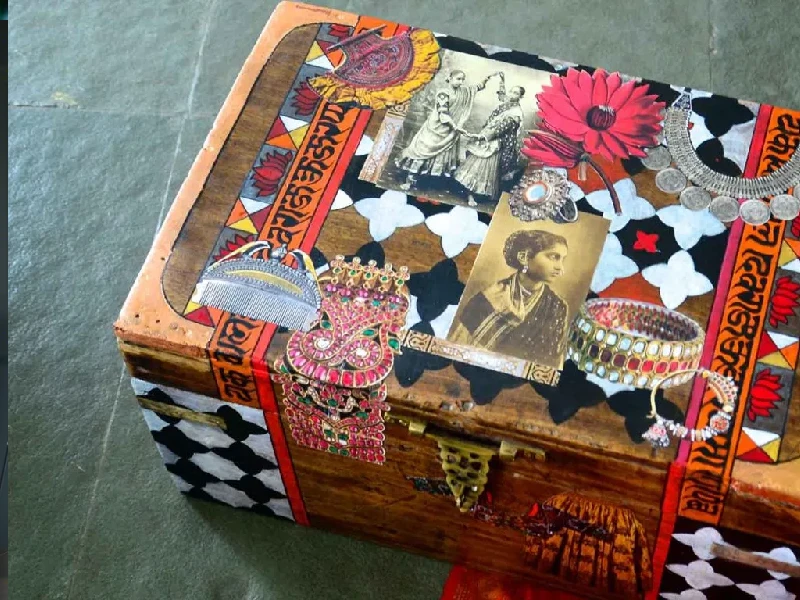
The phrase craft design technology may first sound like a field of study or a curriculum subject. But for many design and stationery fans, it immediately evokes a Japanese design brand known for blending beauty, utility, and precision. In this article, I’ll introduce you to both dimensions: the brand side and the conceptual side, and show why the union of craft, design, and technology holds so much promise.
What Exactly Is Craft Design Technology?
Brand identity: Craft Design Technology (CDT)
Craft Design Technology (often called CDT) is a Japanese design label that produces thoughtfully engineered stationery, tools, and accessories. On its official website, the brand states that it “marries modern design with Japanese heritage of traditional craft and technology innovation.”
From humble beginnings, CDT set out to transform everyday objects (pens, notebooks, cutters) into small design icons. Their philosophy: even the smallest tool deserves intention in form and function.
What the name implies
-
Craft: the tactile, material sensitivity, the hand, the texture
-
Design: proportion, aesthetics, coherence
-
Technology: engineering, precision, modern manufacturing
By combining all three, CDT escapes falling purely into “luxury craft” or “industrial tech” — it sits in between, creating objects that feel both human and precise.
Key principles and signature traits
Some hallmarks of CDT’s design approach:
-
Use of harmonic proportions (such as golden or silver ratios) for visual balance
-
Minimal, restrained aesthetic with Japanese subtlety
-
Focus on durability and refillability
-
Careful material selection (metals, anodized finishes, well-machined parts)
-
Limited editions and color variants that reflect aesthetic discipline
These choices show CDT isn’t chasing novelty so much as coherence — every design decision is intentional.
What Products Does CDT Offer?
CDT’s product line is carefully curated to reflect its brand ideals. Here’s a breakdown:
Stationery & writing tools
-
Multifunction pens (e.g., combining black ink, red ink, mechanical pencil)
-
Fountain or gel pens with elegant bodies
-
Refill systems: inks, leads, cores
Tools & desk accessories
-
Scissors and cutters with designed details
-
Desk organizers, staplers, utility tools
-
Elegant notebooks and memo roll items (A5/A6 sizes, perforated formats)
Special/limited editions & collaborations
From time to time, CDT releases limited color runs or collaborates with designers and retailers, letting fans engage with alternate finishes or aesthetic experiments.
Why Do People Love CDT?
Quality & material integrity
CDT items feel solid. The finishes, touch, and mechanisms reflect careful engineering — not mass-produced mediocrity.
Sustainability through design
Because many CDT items are refillable, you replace inner functional parts (inks, leads) rather than the whole body. That reduces waste and adds long-term value.
Aesthetic consistency
CDT designs are coherent. Their minimal visual language appeals to people who want calm, ordered tools — not flashy or loud ones.
Identity and emotional appeal
For many, owning a CDT tool is part of a design lifestyle. It signals taste, restraint, and a slower approach to consumption.
How CDT Stands Apart from Other Brands
Versus mainstream stationery
Mass-market brands often compete on price, color variety, or trendiness. CDT competes on refinement, coherence, and subtlety.
Unique selling edges
-
Japanese design heritage and discipline
-
Commitment to limited runs (avoiding overexposure)
-
Emphasis on proportion, material, and coherence
-
Targeted appearance in design/boutique channels
Pros & trade-offs
Pros
-
Elegant, tactile, satisfying tools
-
Durable and refillable
-
Distinct identity and design consistency
Cons
-
Higher premium cost
-
Less variety in colors or styles
-
Sometimes harder to source or import
If you buy CDT, you’re paying partly for experience, partly for utility.
Beyond the Brand: “Craft + Design + Technology” as a Concept
Craft & Design / Design & Technology in education
In the UK and some other systems, the subject Design & Technology (D&T) (sometimes formerly called Craft, Design & Technology, CDT) is part of school curricula. Students learn to design, make, and evaluate products using a variety of materials and technologies.
Schools often include work with wood, plastics, electronics, or textiles — combining creativity with technical skills.
Why the intersection is powerful
When craft (hands, material empathy), design (ideation, proportion), and technology (tools, fabrication) blend, you get richer, more expressive work. This is visible in:
-
Makers who use 3D printing but finish by hand
-
Smart textiles combining weaving with sensors
-
Furniture made via parametric design and traditional joinery
In effect, “craft design technology” becomes an approach — a mindset that resists pure automation, and instead seeks to keep the human, the material, and the machine alive together.
Real-world examples
-
A ceramicist embedding electronics in pottery
-
A jeweler using CAD design, but executing hand polishing
-
A furniture designer blending CNC cutting with hand finishing
These hybrids are increasingly celebrated in design circles.
How to Buy & Experience CDT (and Care for It)
Where to buy & what to watch
-
CDT’s official website is the primary source.
-
Boutique design shops and specialty stationery retailers
-
Watch out for import fees and shipping costs
To avoid counterfeits, check:
-
Quality of finishes and engraving
-
Matching serial numbers or branding
-
Packaging and documentation
-
Whether refills match official specs
Pricing expectations
CDT sits in the premium segment. Prices are higher than mainstream, justified by design, materials, and limited runs.
Maintenance & refills
-
Use genuine or spec-matching inks/leads
-
Clean tools gently, avoid abrasive or corrosive cleaners
-
For scissors or cutting tools, maintain edges properly
-
Store in dry, safe places to avoid damage
With care, a CDT tool can remain delightful and functional for many years.
Final Thoughts: Why Craft Design Technology Resonates
“Craft design technology” is more than a neat brand name — it’s a statement: that everyday objects deserve thought, that utility and beauty need not be separate, and that the hand and machine can coexist. For design-conscious users, CDT offers tools that reward use, not just display.
Whether you’re a stationery lover, a maker, a student of design, or simply someone who appreciates well-made tools — exploring CDT is a way of reminding ourselves that craft, design, and technology don’t have to compete. They can collaborate.
FAQs
What is Craft Design Technology (CDT)?
It’s a Japanese design brand making elegant stationery, tools, and accessories that combine craftsmanship, minimal design, and technological precision.
Are CDT products refillable?
Yes — many CDT pens and tools support refillable cores, ink cartridges, or replacement parts to extend their lifespan.
Is CDT a purely artisanal brand?
No — while they emphasize craft, CDT also uses modern manufacturing techniques and engineering to achieve precision and consistency.
What does “craft design technology” mean in education?
In some curricula (especially in the UK), it refers to a subject where students learn hands-on making combined with design thinking and technology applications.
How can I tell a genuine CDT item from a fake?
Check finish quality, engraving, packaging, correct refill components, and buy only from trusted retailers or the official site.


